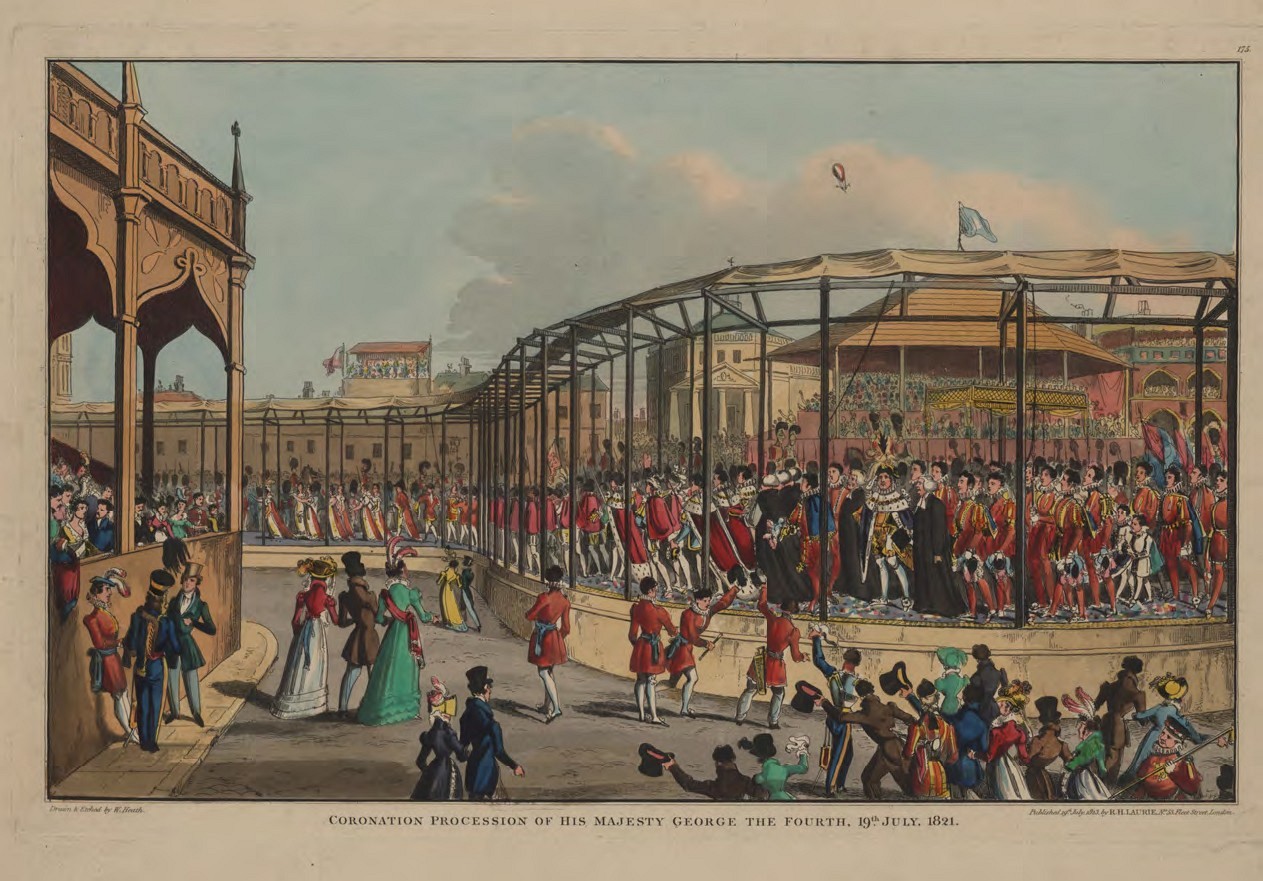
A print showing the street procession for King George IV’s coronation on 19 July 1821 in St James’s Park, London, when Britain was fastchanging into an industrial, urban nation. The hot air balloon represents balloonist Charles Green’s first ascension and the first successful use of coal gas, which was cheaper than hydrogen and more readily available
The Georgian era commenced in 1714 with the accession of George I and the House of Hanover, and continued until 1830, or 1837 if the short reign of William IV is included.